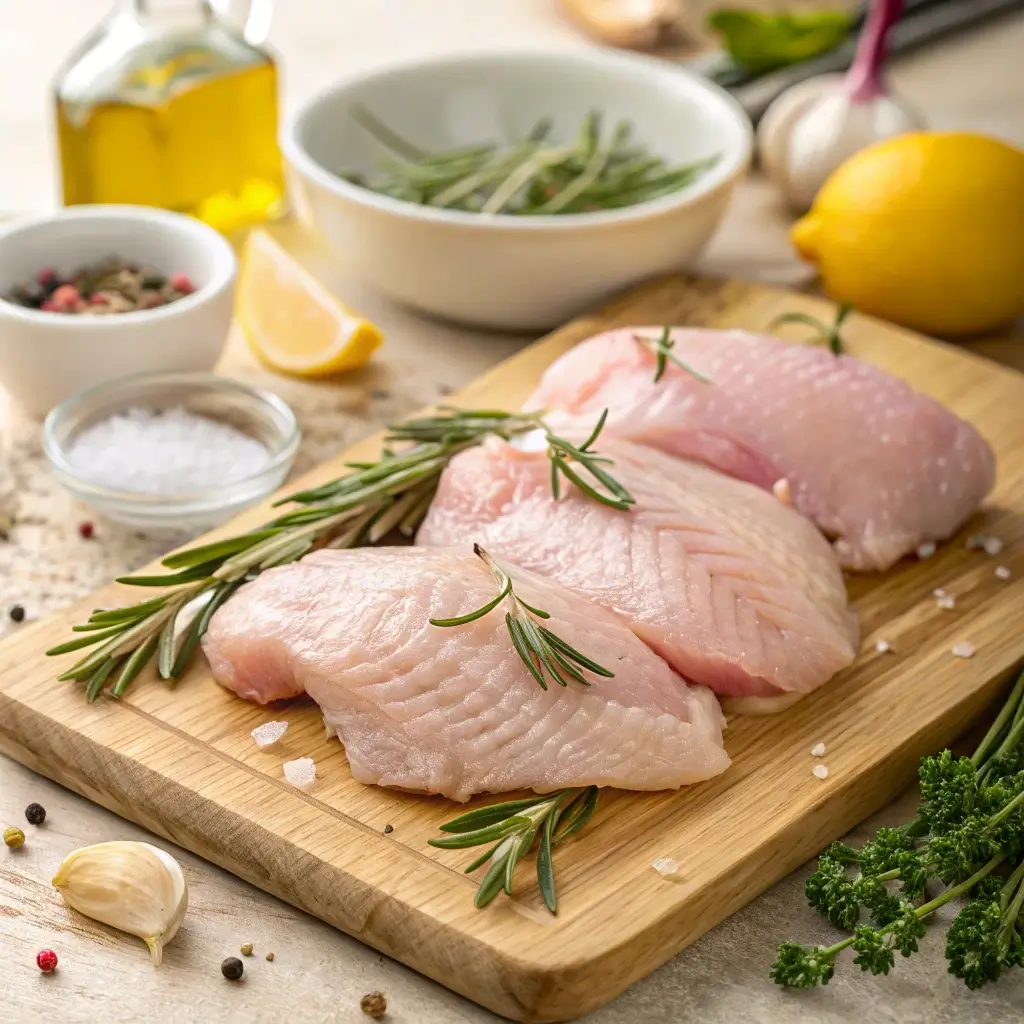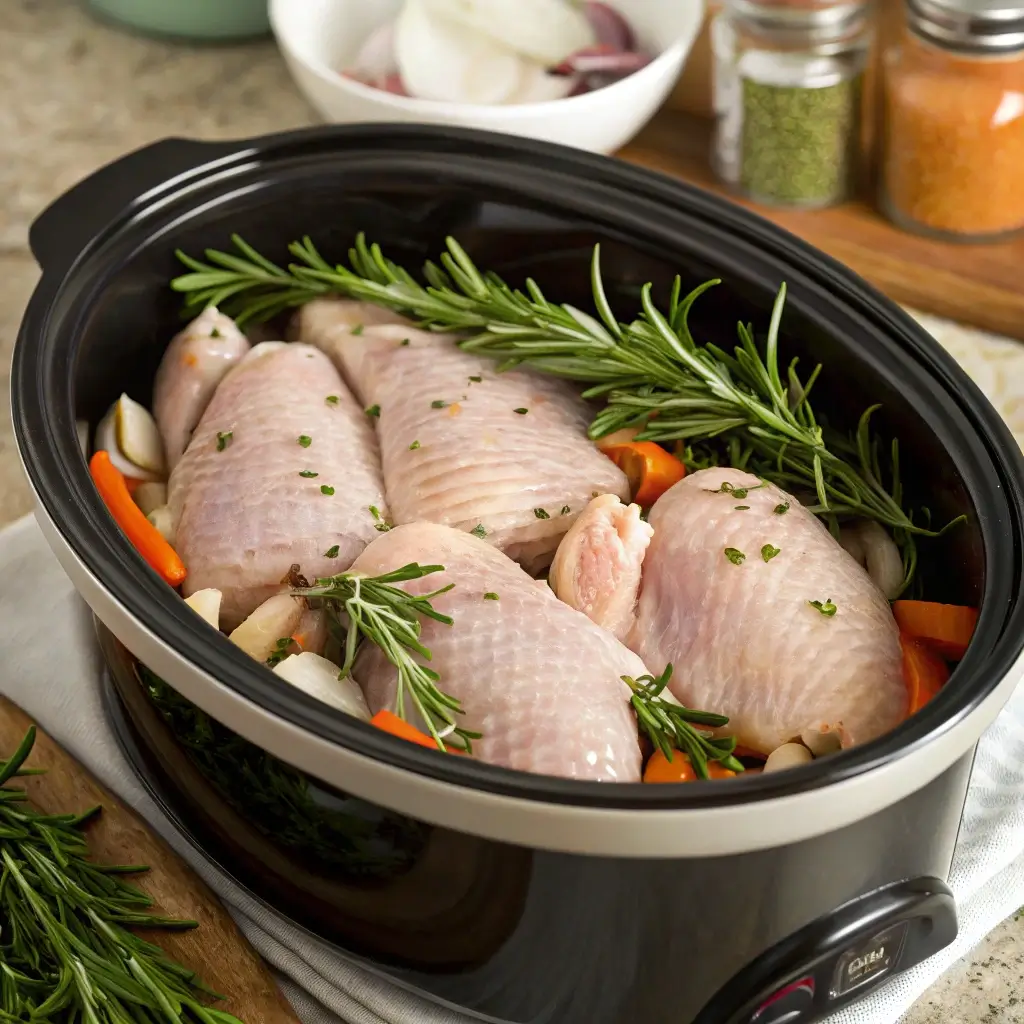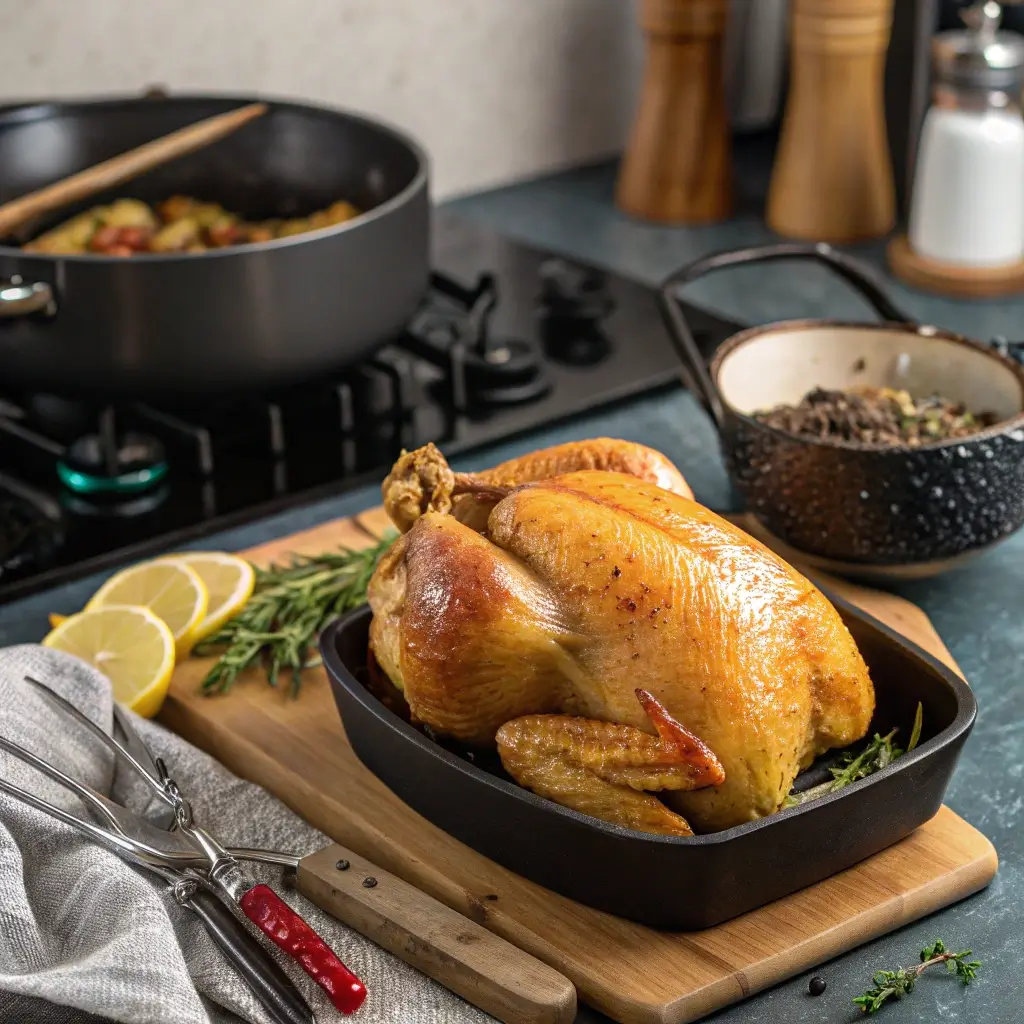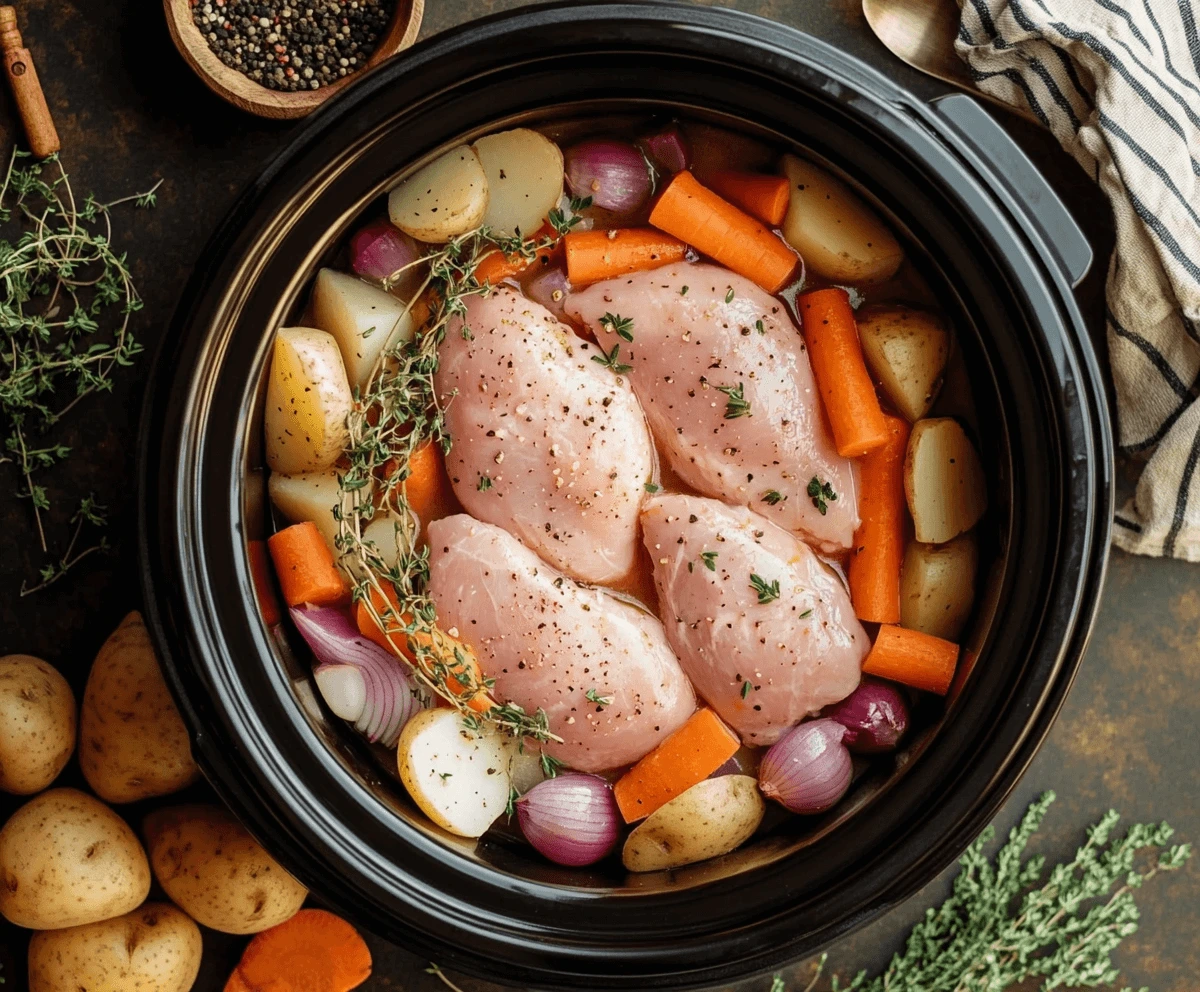Raw chicken is one of the most versatile and widely used ingredients in kitchens around the world. Whether you’re preparing a simple weeknight dinner or an elaborate feast, raw chicken serves as the foundation for countless delicious dishes. However, handling raw chicken requires care and attention to ensure it is cooked safely and to perfection.
In this article, we will explore everything you need to know about raw chicken. From selecting the best cuts to storing it properly, and from cooking techniques to safety tips, this guide will equip you with the knowledge to handle raw chicken like a pro. So, let’s dive into the world of raw chicken and discover why it’s a staple in so many kitchens.
Table of Contents
Why You’ll Love This
There are numerous reasons to appreciate raw chicken as a culinary ingredient. First and foremost, it’s incredibly versatile. Whether you’re grilling, baking, frying, or sautéing, raw chicken can be adapted to a wide range of cooking methods and cuisines.
Another reason to love raw chicken is its nutritional value. Chicken is a lean source of protein, making it a healthy choice for those looking to maintain a balanced diet. It’s also rich in essential vitamins and minerals, such as B vitamins, which are crucial for energy metabolism.
Moreover, raw chicken is affordable and widely available. It’s a budget-friendly option that doesn’t compromise on taste or quality. With the right techniques, you can transform raw chicken into a gourmet meal that’s sure to impress.
Lastly, raw chicken is easy to work with. Whether you’re a seasoned chef or a beginner in the kitchen, you’ll find that raw chicken is forgiving and adaptable, making it a great ingredient to experiment with.
Ingredients

When working with raw chicken, the ingredients you pair it with can make all the difference. Here are some essential ingredients that complement raw chicken beautifully:
- Chicken: Choose high-quality cuts like breasts, thighs, or drumsticks. Organic or free-range chicken is often preferred for its flavor and texture.
- Seasonings: Salt, pepper, garlic powder, onion powder, and paprika are basic seasonings that enhance the natural flavor of chicken.
- Marinades: Ingredients like olive oil, lemon juice, soy sauce, and honey can be used to create flavorful marinades.
- Herbs and Spices: Fresh or dried herbs like thyme, rosemary, and oregano add depth and aroma to chicken dishes.
- Vegetables: Onions, garlic, bell peppers, and carrots are great companions for chicken in various recipes.
- Sauces: Tomato sauce, cream sauce, and barbecue sauce can be used to create rich and flavorful dishes.
Variations
One of the best things about raw chicken is its adaptability. Here are some delicious variations you can try:
- Grilled Chicken: Marinate the chicken in a mixture of olive oil, lemon juice, and herbs, then grill until juicy and charred.
- Baked Chicken: Coat the chicken in a mixture of breadcrumbs and Parmesan cheese, then bake until golden and crispy.
- Fried Chicken: Dip the chicken in a buttermilk batter, coat with flour, and fry until crispy and golden brown.
- Chicken Stir-Fry: Sauté the chicken with vegetables and a soy sauce-based sauce for a quick and healthy meal.
- Chicken Curry: Cook the chicken in a spicy curry sauce made with coconut milk, tomatoes, and Indian spices.
- Chicken Soup: Simmer the chicken with vegetables, herbs, and broth to create a comforting and nutritious soup.
Feel free to get creative and experiment with different ingredients and cooking methods to make the most of raw chicken.
Steps

Handling and cooking raw chicken requires care and attention to ensure it is safe to eat. Follow these step-by-step instructions to prepare raw chicken properly:
Step 1: Selecting the Chicken
- Choose High-Quality Chicken: Opt for fresh, high-quality chicken from a reputable source. Look for chicken that has a pink hue and is free from any off odors.
- Check the Packaging: Ensure the packaging is intact and that the chicken is within its use-by date.
Step 2: Storing the Chicken
- Refrigerate Immediately: Store raw chicken in the refrigerator at a temperature of 40°F (4°C) or below.
- Use Airtight Containers: Place the chicken in an airtight container or wrap it tightly in plastic wrap to prevent cross-contamination.
- Freeze if Necessary: If you’re not planning to use the chicken within a couple of days, freeze it at 0°F (-18°C) or below.
Step 3: Preparing the Chicken
- Thaw Safely: If frozen, thaw the chicken in the refrigerator, in cold water, or in the microwave. Avoid thawing at room temperature to prevent bacterial growth.
- Clean the Chicken: Rinse the chicken under cold water and pat it dry with paper towels. Remove any excess fat or skin if desired.
- Cut and Trim: Cut the chicken into the desired pieces and trim any excess fat or skin.
Step 4: Cooking the Chicken
- Season the Chicken: Season the chicken with salt, pepper, and any other desired seasonings or marinades.
- Choose a Cooking Method: Decide on a cooking method such as grilling, baking, frying, or sautéing.
- Cook to the Right Temperature: Ensure the chicken reaches an internal temperature of 165°F (74°C) to ensure it is safe to eat. Use a meat thermometer to check the temperature.
- Rest the Chicken: Let the chicken rest for a few minutes after cooking to allow the juices to redistribute, ensuring a juicy and flavorful result.
Step 5: Serving the Chicken
- Plate the Dish: Arrange the cooked chicken on a serving platter or individual plates.
- Garnish: Add fresh herbs, lemon wedges, or a drizzle of sauce for extra flavor and presentation.
- Serve Immediately: Enjoy your delicious chicken dish while it’s hot!
Tips and Tricks

To ensure your raw chicken dishes turn out perfectly every time, here are some handy tips and tricks:
- Handle with Care: Always wash your hands, utensils, and surfaces thoroughly after handling raw chicken to prevent cross-contamination.
- Use a Meat Thermometer: Ensure the chicken reaches an internal temperature of 165°F (74°C) to ensure it is safe to eat.
- Marinate for Flavor: Marinating the chicken for at least 30 minutes (or overnight) can enhance its flavor and tenderness.
- Avoid Overcooking: Overcooking can result in dry and tough chicken. Keep an eye on the cooking time and use a meat thermometer to check for doneness.
- Rest the Chicken: Let the chicken rest for a few minutes after cooking to allow the juices to redistribute, ensuring a juicy and flavorful result.
- Store Properly: Store raw chicken in the refrigerator or freezer immediately after purchase and use it within the recommended time frame.
How to Serve
Raw chicken can be served in a variety of ways, depending on the dish you’re preparing. Here are some ideas for serving cooked chicken:
- As a Main Course: Serve grilled, baked, or fried chicken as the main dish, accompanied by sides like mashed potatoes, steamed vegetables, or a fresh salad.
- In Salads: Add sliced or shredded chicken to green salads, pasta salads, or grain bowls for a protein-packed meal.
- In Sandwiches and Wraps: Use cooked chicken to make sandwiches, wraps, or burgers for a quick and satisfying meal.
- In Soups and Stews: Add cooked chicken to soups, stews, or casseroles for a hearty and comforting dish.
- As Appetizers: Serve chicken wings, drumsticks, or skewers as appetizers or party snacks.
Make Ahead and Storage
If you’re planning ahead or have leftovers, here’s how to handle raw and cooked chicken:
- Make Ahead: You can marinate raw chicken and store it in the refrigerator for up to 24 hours before cooking. Cooked chicken can be prepared in advance and stored in the refrigerator for up to 3 days.
- Storage: Store raw chicken in the refrigerator at 40°F (4°C) or below and use it within 1-2 days. Cooked chicken should be stored in an airtight container in the refrigerator and consumed within 3-4 days.
- Freezing: Raw chicken can be frozen for up to 9 months, while cooked chicken can be frozen for up to 4 months. Thaw in the refrigerator before using.
FAQs
How can I tell if raw chicken is fresh?
Fresh raw chicken should have a pink hue and be free from any off odors. The packaging should be intact, and the chicken should be within its use-by date.
Can I refreeze raw chicken?
It is generally not recommended to refreeze raw chicken that has been thawed, as this can affect its texture and safety. However, if the chicken was thawed in the refrigerator and has not been at room temperature for more than 2 hours, it can be refrozen.
What is the best way to thaw frozen chicken?
The safest way to thaw frozen chicken is in the refrigerator. You can also thaw it in cold water (changing the water every 30 minutes) or in the microwave using the defrost setting.
How long can I marinate raw chicken?
Raw chicken can be marinated in the refrigerator for up to 24 hours. Marinating for at least 30 minutes can enhance flavor and tenderness.
Can I cook chicken from frozen?
Yes, you can cook chicken from frozen, but it will take longer to cook. Ensure it reaches an internal temperature of 165°F (74°C) to ensure it is safe to eat.
Conclusion
In conclusion, raw chicken is a versatile, nutritious, and affordable ingredient that can be transformed into a wide range of delicious dishes. By following proper handling and cooking techniques, you can ensure that your chicken dishes are safe, flavorful, and satisfying.
Whether you’re grilling, baking, frying, or sautéing, raw chicken offers endless possibilities for culinary creativity. With the tips, tricks, and variations provided in this guide, you’ll be well-equipped to make the most of this staple ingredient.
So, the next time you’re in the kitchen, don’t hesitate to reach for raw chicken and let your culinary imagination run wild. Happy cooking!

